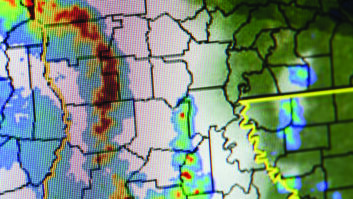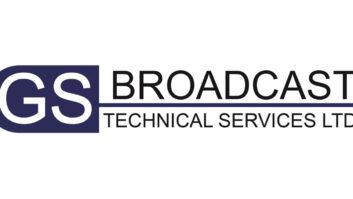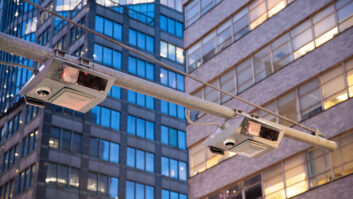AM Power: Why Stop There?
Richard Arsenault is substantially correct when he say that an AM power increase of a factor of 10 is what AM radio needs to become competitive again (“How About a Hike in AM Power,” May 19).
I believe I can provide a number of other suggestions which will enhance the position of these AM broadcasters:
- If a 10 dB power increase would be good, a 20 dB increase would be 10 times as good. Why stop at only 10 dB? And why only daytime? We can certainly overcome skywave interference issues with enough power.
- Eliminate the directional antenna rules. At least half of the AM directionals now licensed are operating substantially outside their licensed values. Why should impoverished broadcasters have to pay to repair and maintain these antiquated, real estate-consuming money pits?
- The FCC should also mandate that all cell phones, iPods, iPads and every other electronic device covered by Part 15 rules must act as an AM radio in initial power-up mode, and can only be used for some other function when the users pay a fee to their local AM station to get a password to unlock their device.
- The government should immediately ban high-efficiency flourescent lighting, Internet over power lines, neon signs, microwave ovens and spark plugs. Nobody needs that stuff anyway.
- Obama stimulus money should immediately be distributed to each AM broadcaster, to be used not to technically upgrade or enhance programming, but to send the owners on cruises.
- All AM stations should immediately be issued CPs for Class C FMs, and FEMA will pay to build them.
Many years ago, Walt Kelly did a “Pogo” cartoon whose message was a joke on the John Paul Jones quote: “We have met the enemy and he is us.”
There are AM stations around the dial, not just in major markets, that function as businesses and have audiences. Many stations have achieved a dysfunctional state because their operators gave up years ago. This is happening to many FMs too.
Mr. Arsenault’s proposal is a restatement of the popular fallacy that every problem has a simple solution. This is not true. The problems that had simple solutions have all been solved. What we’re left with are tricky problems that will require carefully crafted, often case-specific solutions.
All of this discussion, of course, ignores market demands. If you put a product out there that people see some value and desirability in, you’ll be successful. If not …
James Walker
Broadcast Engineer and Programmer
Liberty, Ind.
Do It, and Now!
500 kW = good; but no HD with that kind of power.
Also, manufacturers of radios to put variable bandwidth and noiseblankers on AM, even the AMAX standard option = good.
Most important, the FCC enforcing the switching power supply manufacturers, LED traffic signal boys, dimmers, and even pump motors to put the kaibosh on the RF noise generated on MW.
Heck, I’m all for 750 kW clear-channel 1A stations for the original batch of stations: i.e., if your call letters are just three letters, and you’re omni, then you get 750 kW as soon as you want it.
Case closed. Let’s do it, and do it now!
John Pavlica
Toledo, Ohio
The Costs of Daytime Power
There are many things I basically like about the idea of increased power on the medium-wave bands in the U.S. radio market.
I grew up in the era of CBS-Murrow/Edwards/Cronkite et al., NBC-Monitor Radio and Mutual Radio News on the hour; it is my long-held view that “national” radio voice(s) are needed in America in addition to the most excellent National Public Radio network. Super-power AM stations would go a long way to fulfill that dream mission for nighttime broadcasts.
However, I am not so enthusiastic about a daytime increase in power for the following reasons (I am not addressing the proposed increase in early-morning hours for Class B stations, which is beyond my area of experience):
An increase in daytime medium-wave power would yield unquestioned benefits but at a very high cost-to-benefit ratio. The FCC and NAB Ground Wave Field Strength Curves tell a very interesting story.
A 50 kW station on 940 kHz operating into a quarter-wave antenna will deliver approximately 0.5 mV per meter field strength at a distance from the station of approximately 75 km at 10 mS/m ground conductivity. An increase of station power to 500 kW would increase this distance only to approximately 120 km. (The vagaries of daytime ground-wave propagation!) This is equivalent to an increase in area, mostly rural area for most stations, of 2.6 for an increase in power of 10.
Modern AM transmitters have remarkable power efficiency of roughly 90 percent. However, the cost of power and operating personnel for these large powers is not insignificant.
A 50 kW transmitter at 90 percent efficiency consumes approximately 60 kW of power under program conditions. At $0.12 per kWhr, this represents an annual cost for power of $63,000. By simple ratio, a 500 kW daytime transmitter would cost an additional $283,500 per year (based on 12 hours per day at each power level) — not including the substantial cost of initial investment not only for the transmitter but for the antenna system as well.
In addition, larger transmitter and antenna systems would require more operational and maintenance expense.
To repeat, the increase in coverage area for most stations would be rural — perhaps including some otherwise uncovered small metropolitan areas, but nevertheless mostly rural, making the 2.6 increase factor in area covered even less attractive in terms of population density.
This story would be quite different for nighttime skywave propagation. In my view, there are network Class A stations that could provide the nation a real service if the government would allow them to increase their nighttime power … 500 kW would be a start!
George Woodard
McKinney, Texas
Power vs. Power
Your piece about AM power fits nicely with my article “Environmental Effects of the Widespread Deployment of High-Speed Power Line Communication.” It was published in “The EMC Journal,” Issue 87, March 2010, and may be found at www.theemcjournal.com, click on “PLT.”
It calculates in Section 3 that the world’s shortwave broadcasters will have to increase power at a rate equivalent to commissioning 30,000 wind turbines per year to maintain their signal/noise ratio against PLT/BPL alone.
Thank you for providing the first documented step in this direction!
Richard Marshall
Harpenden, England












